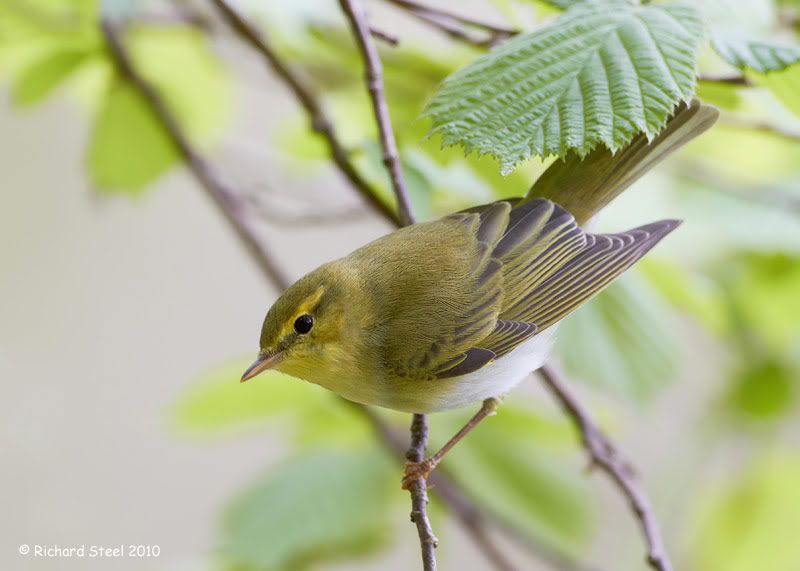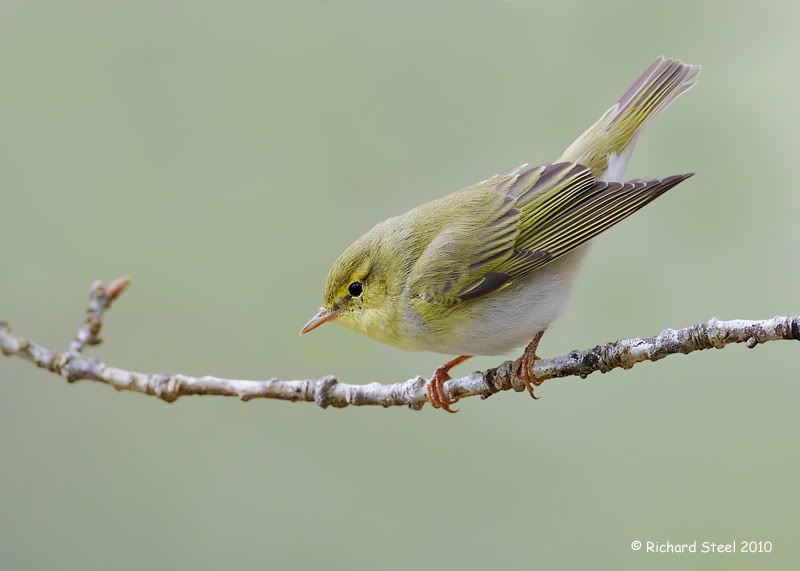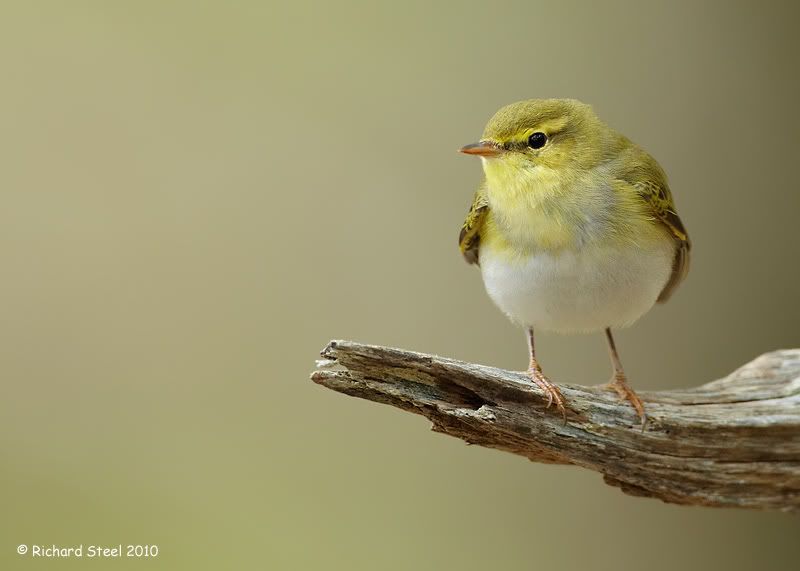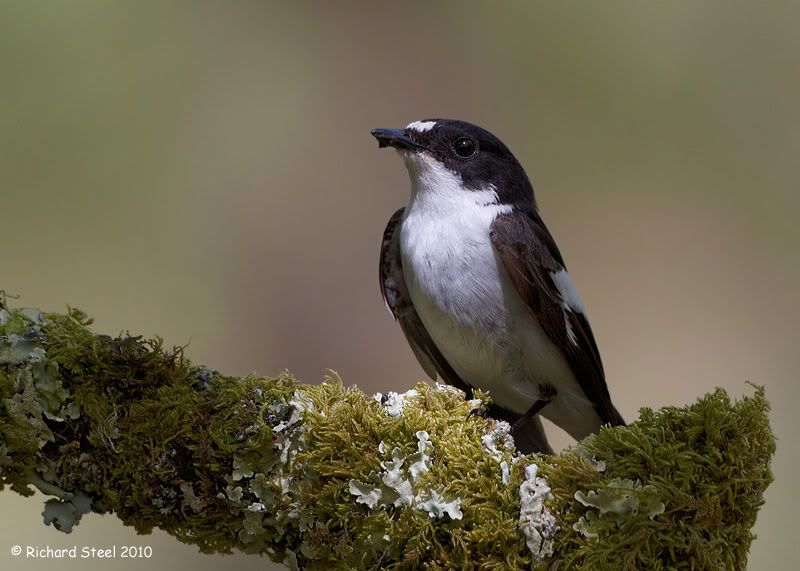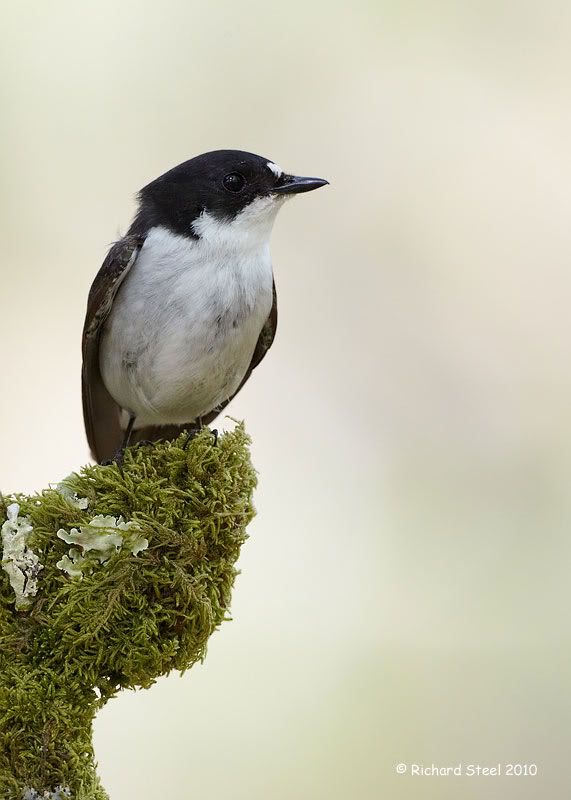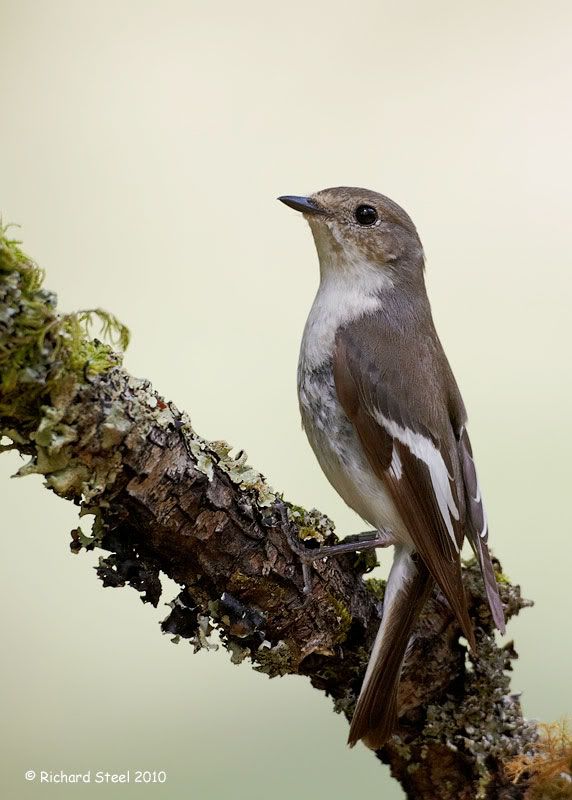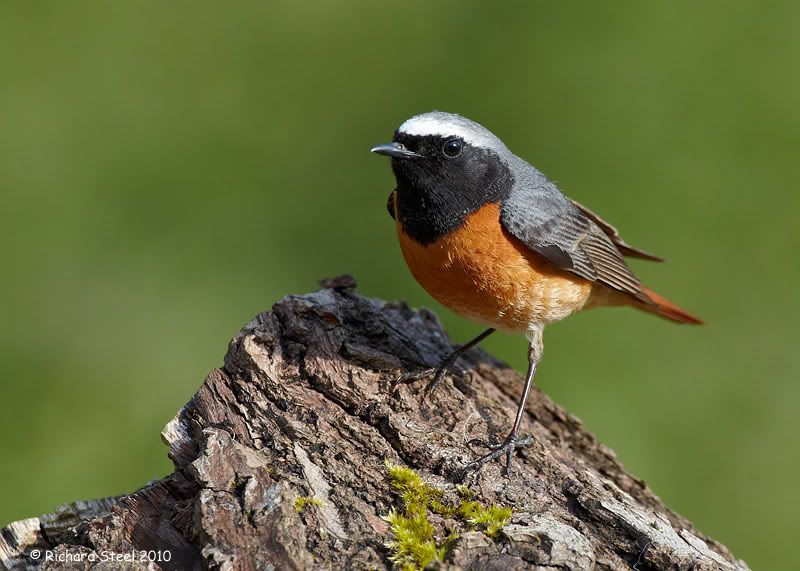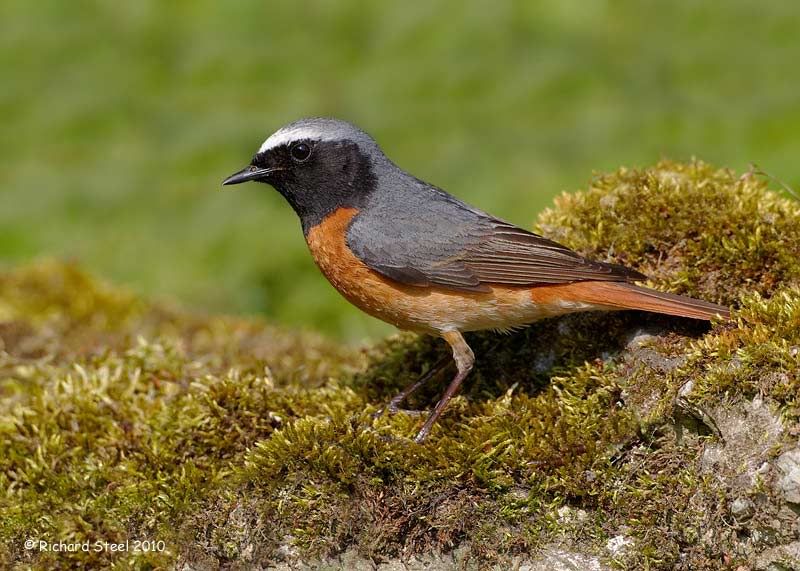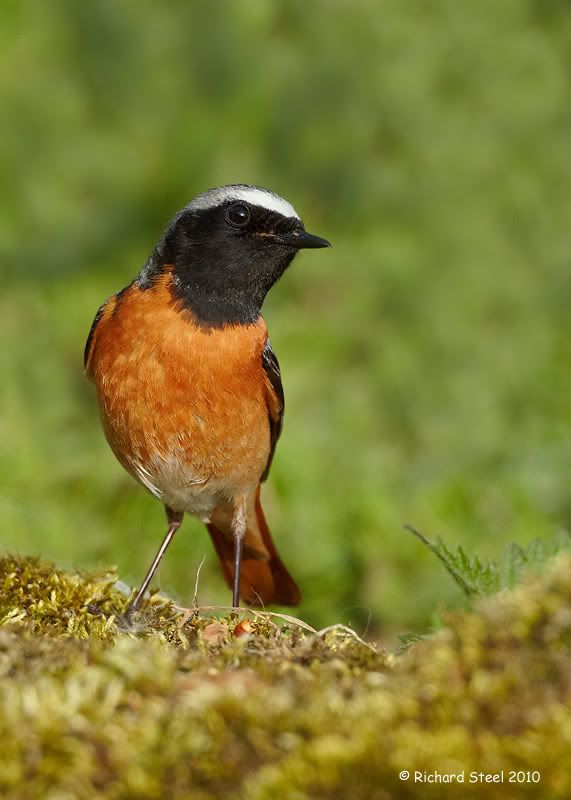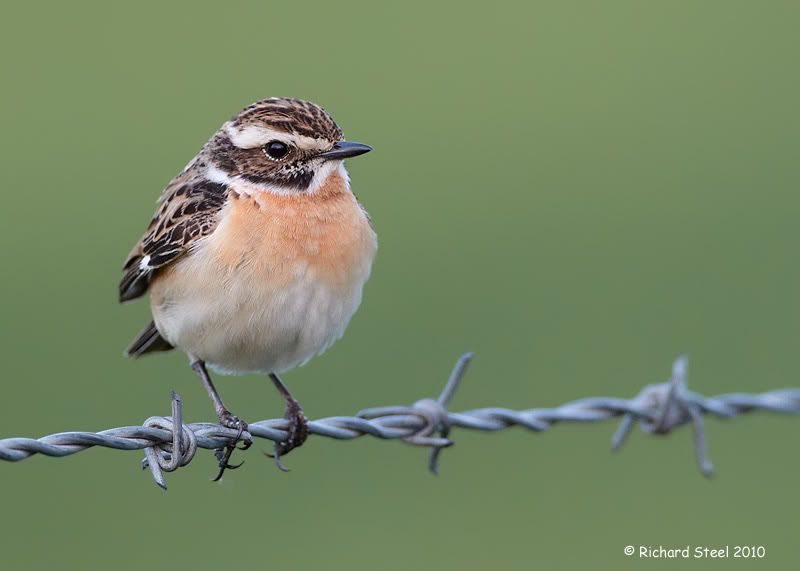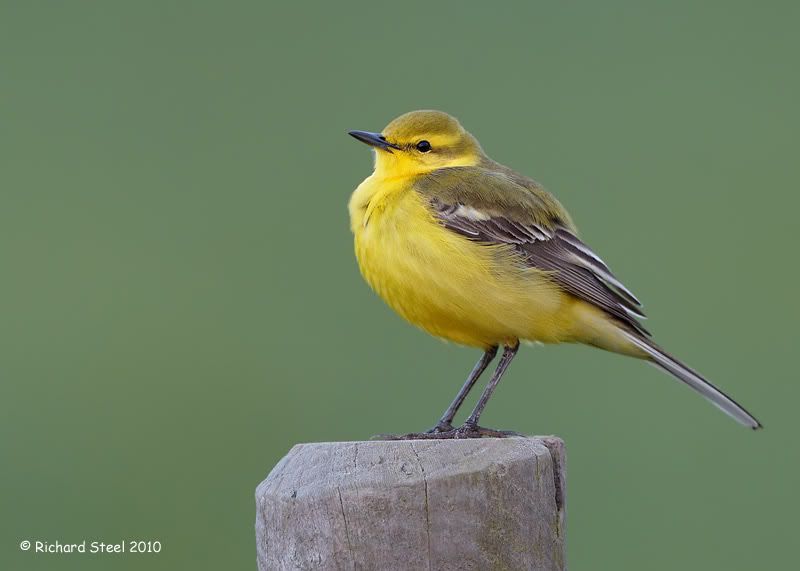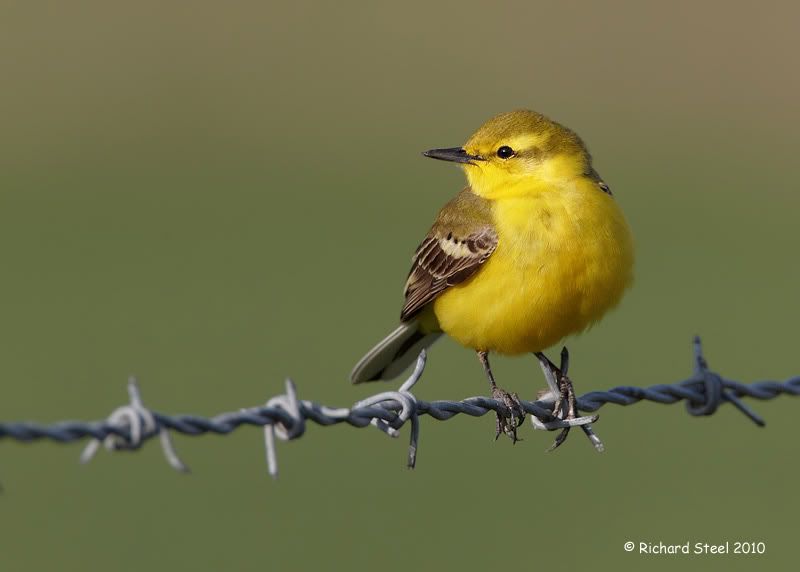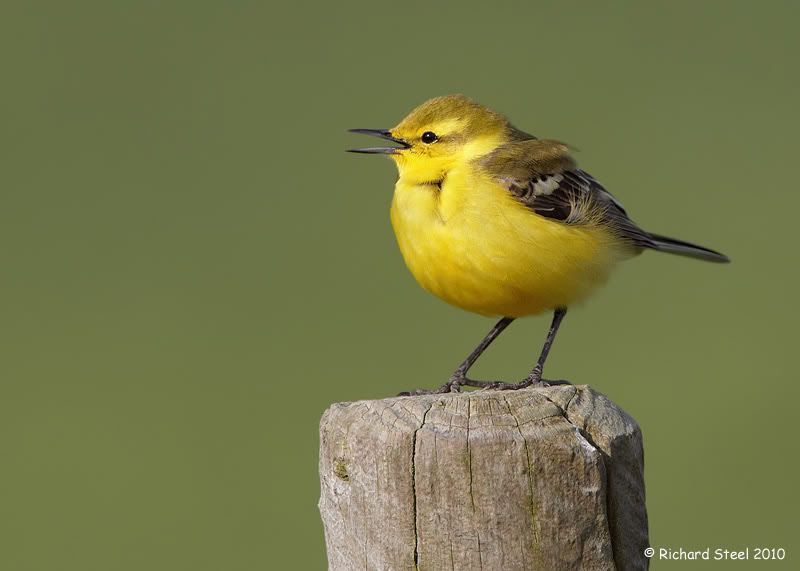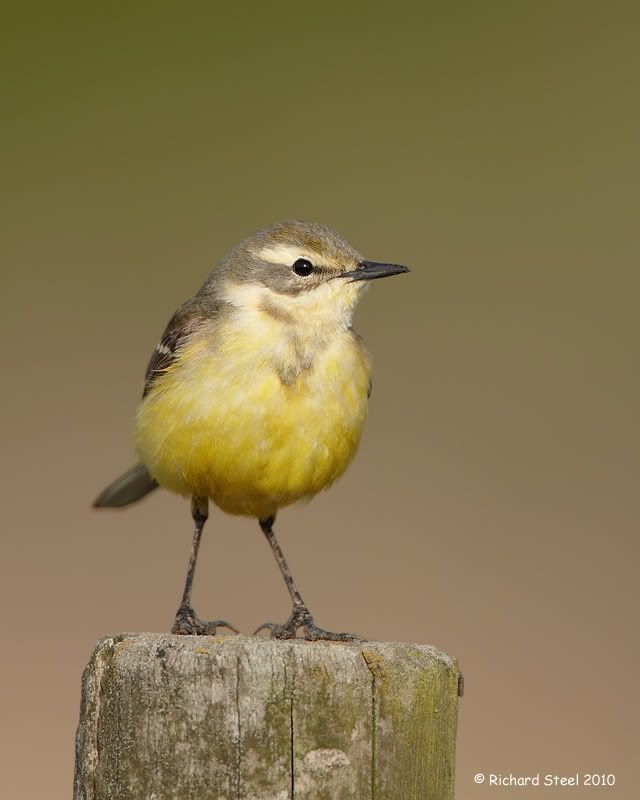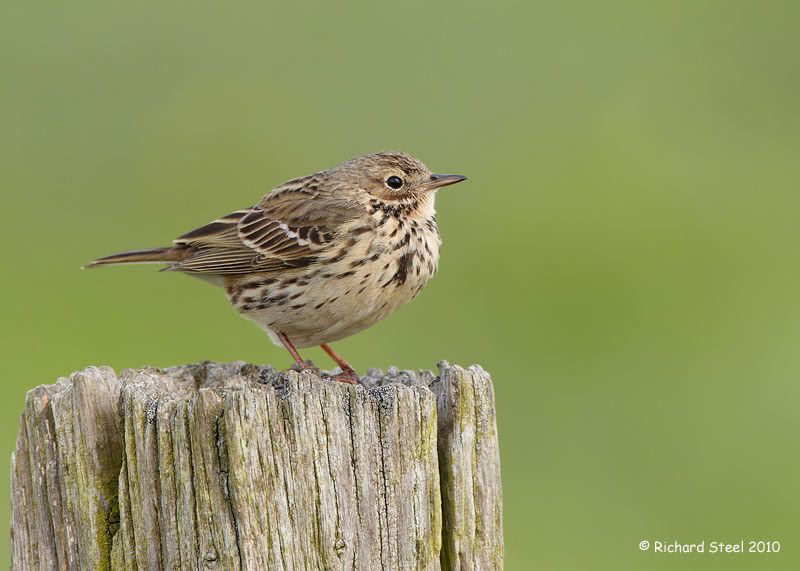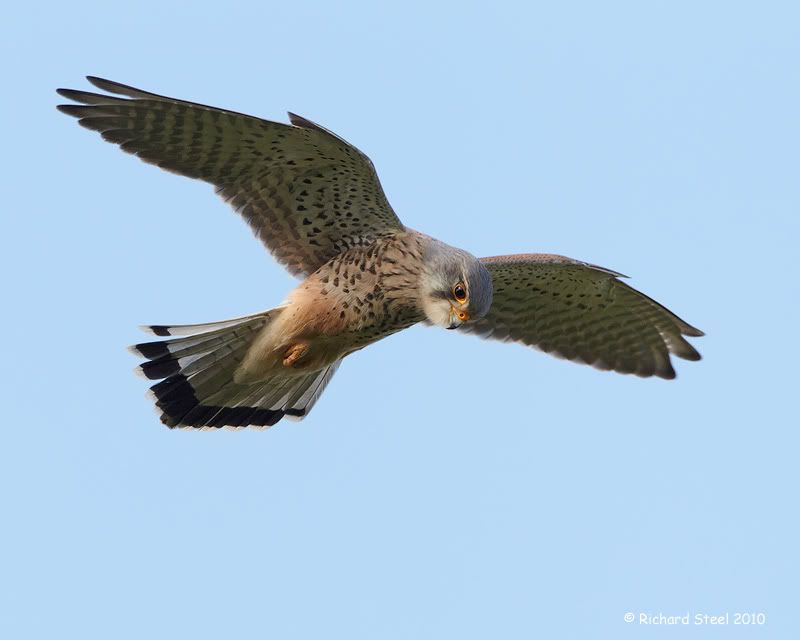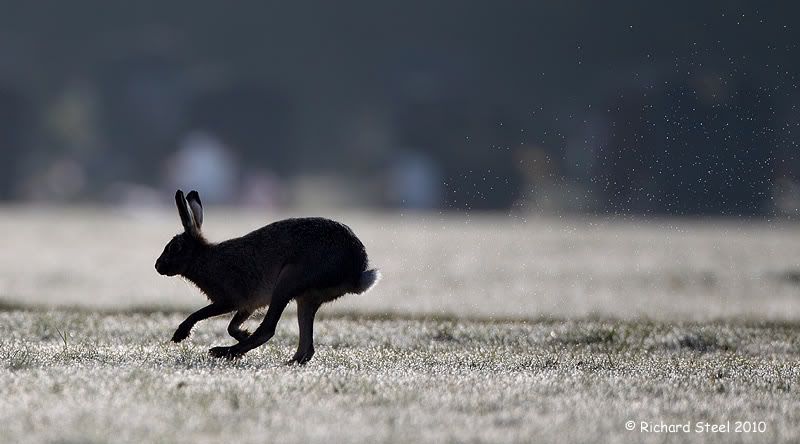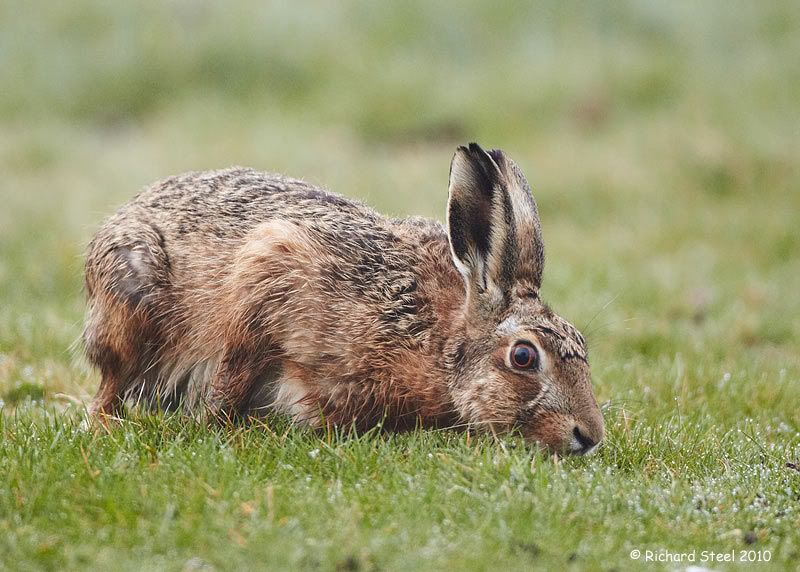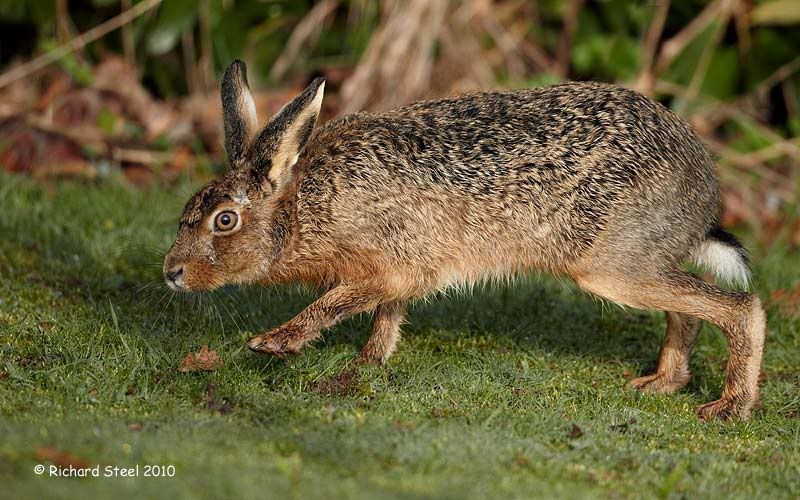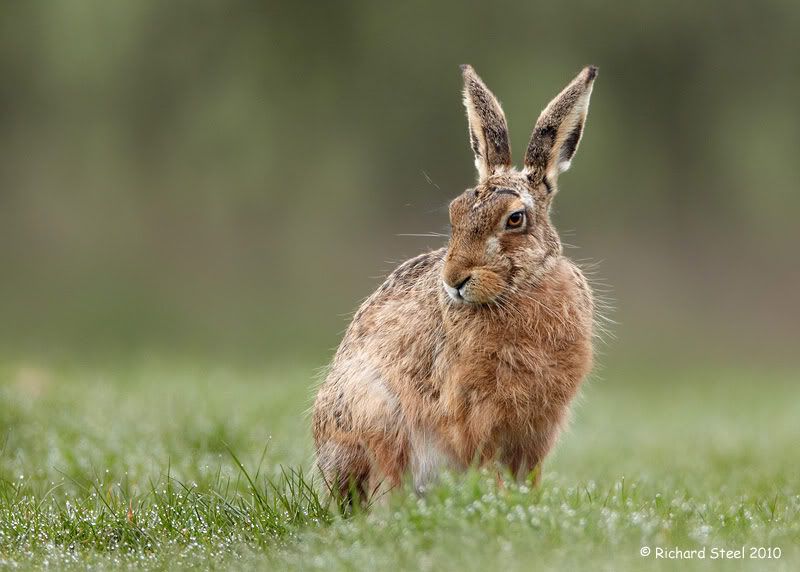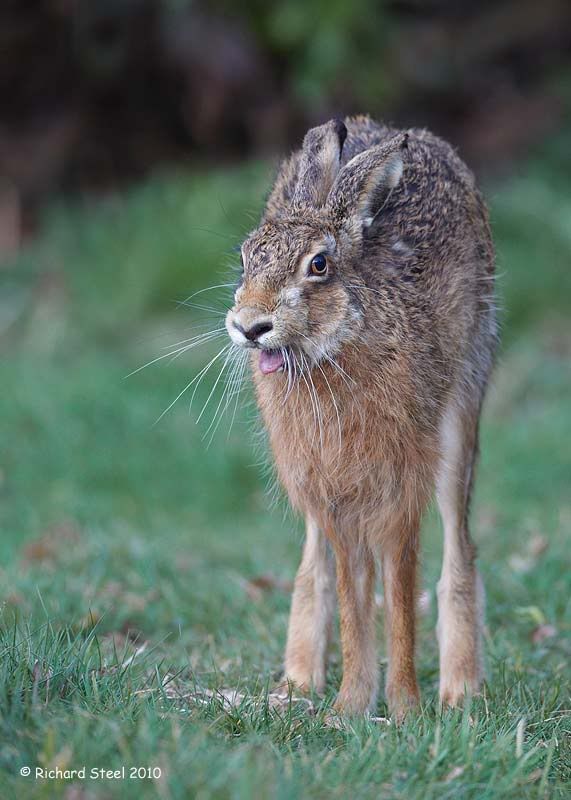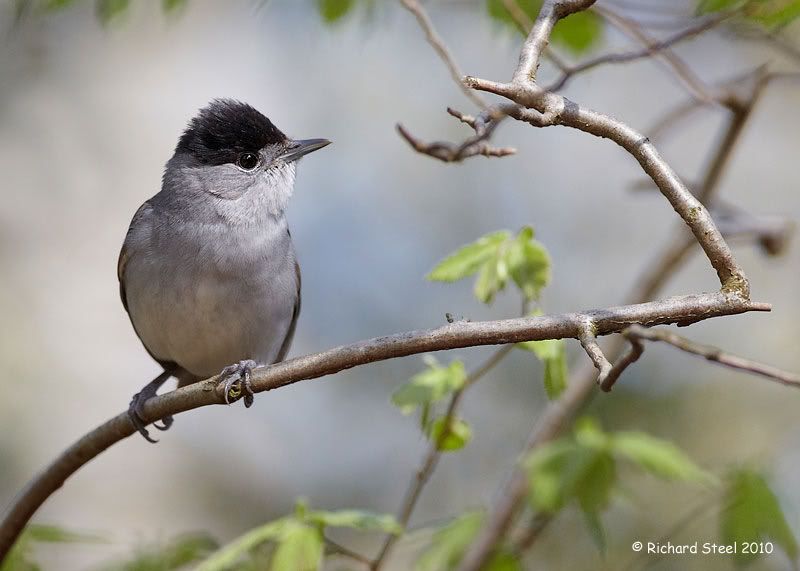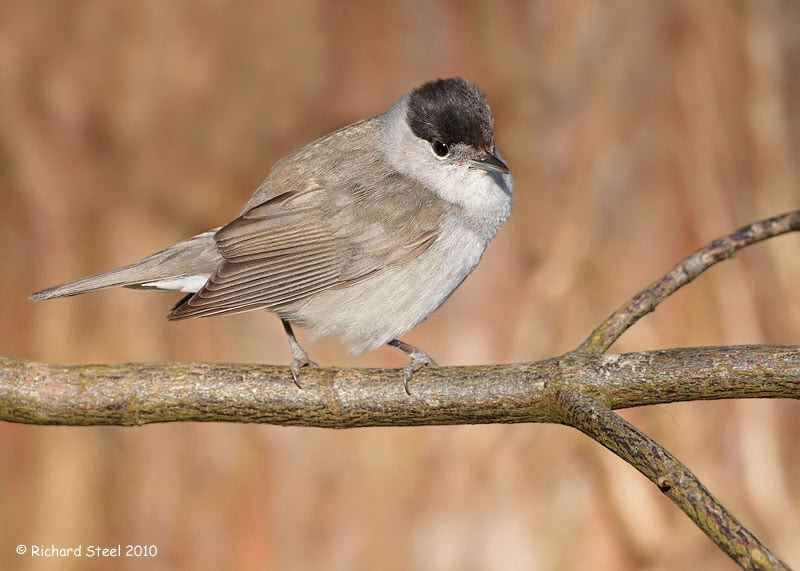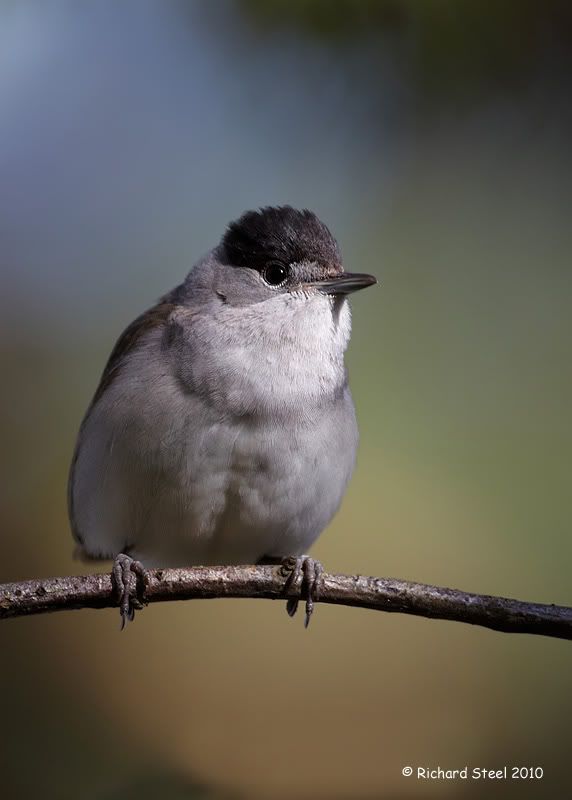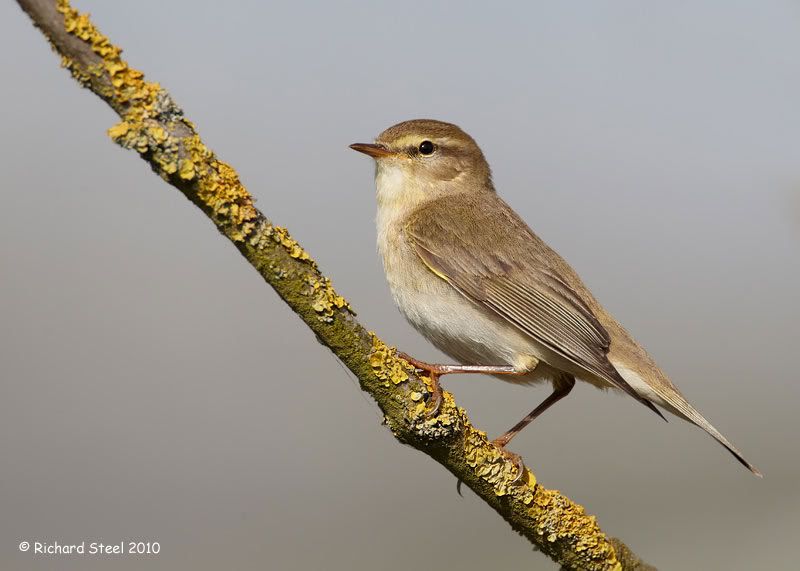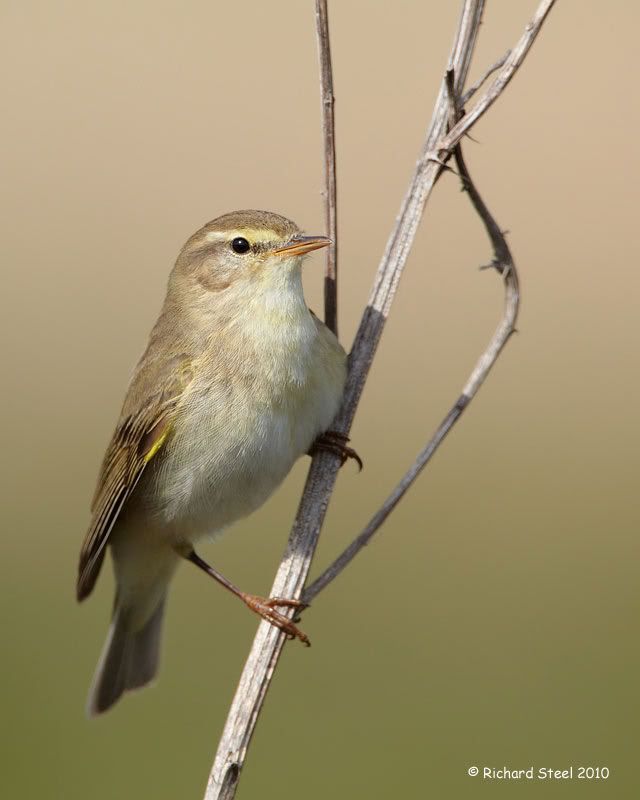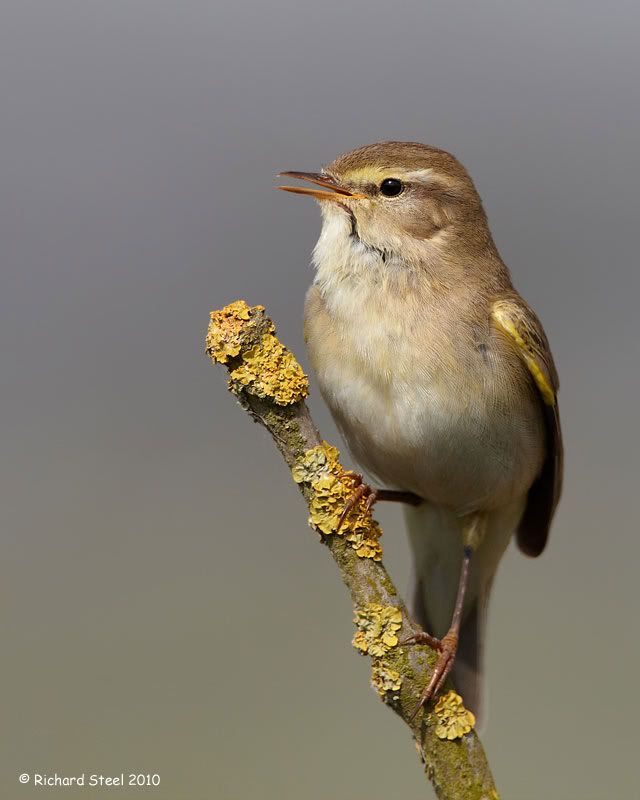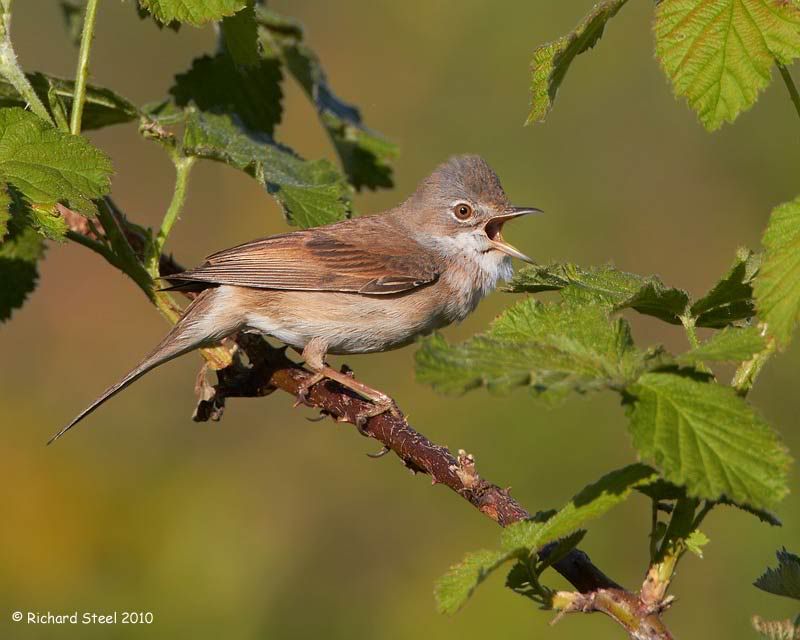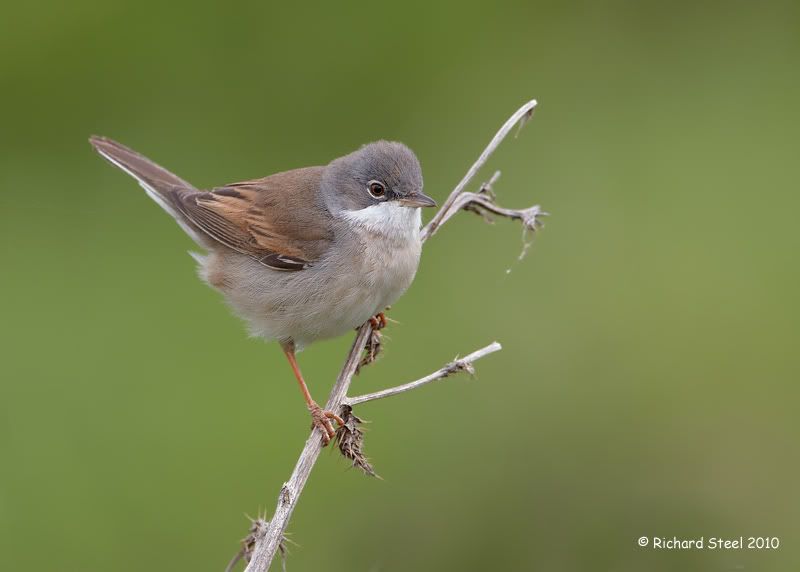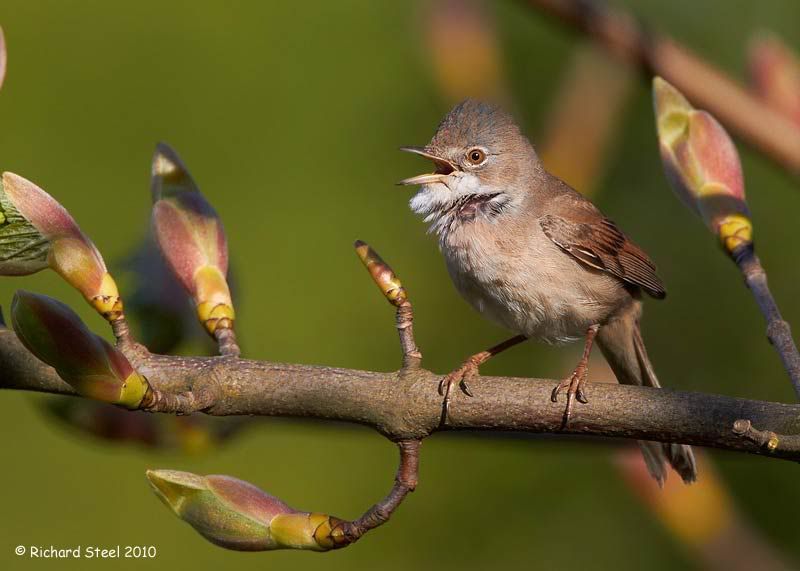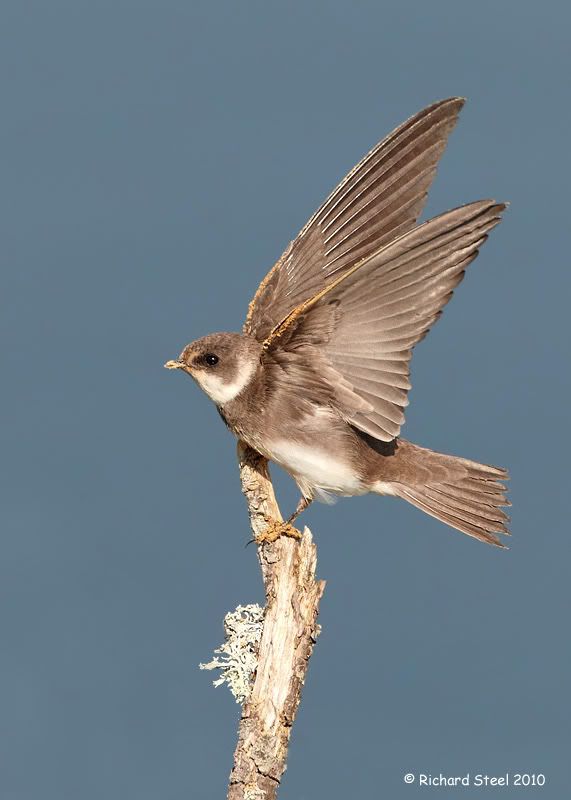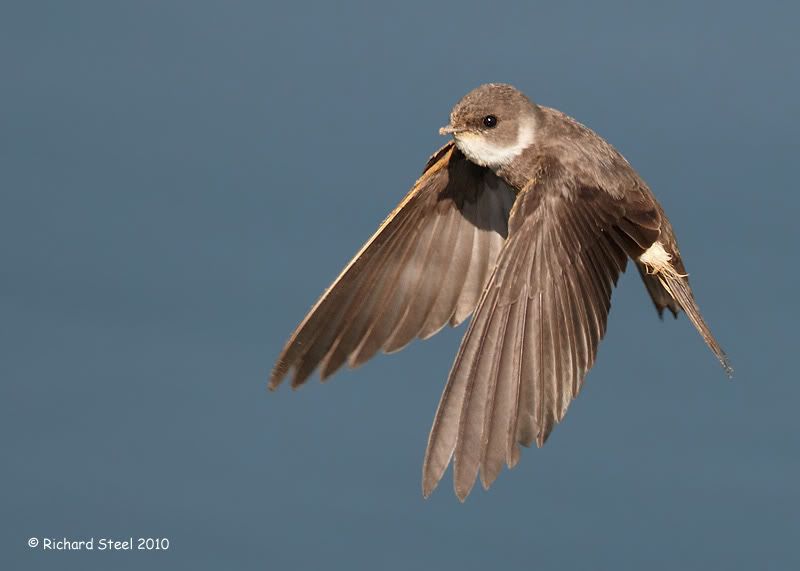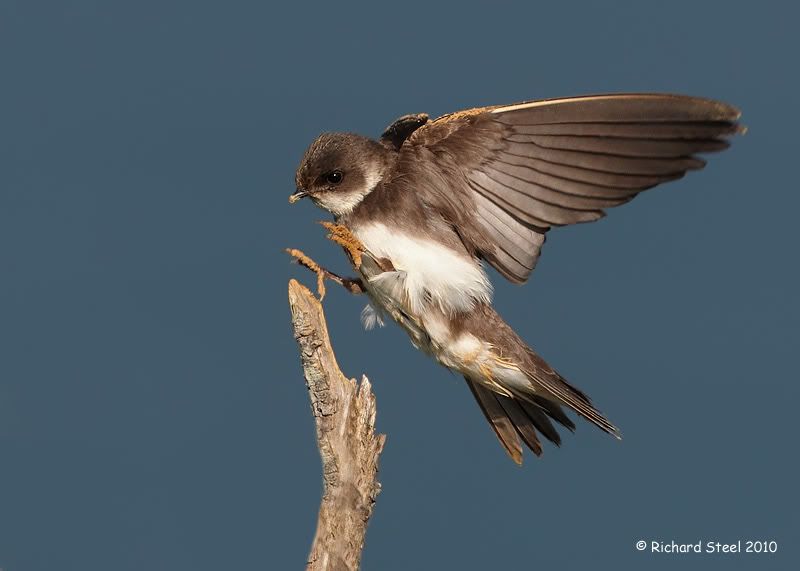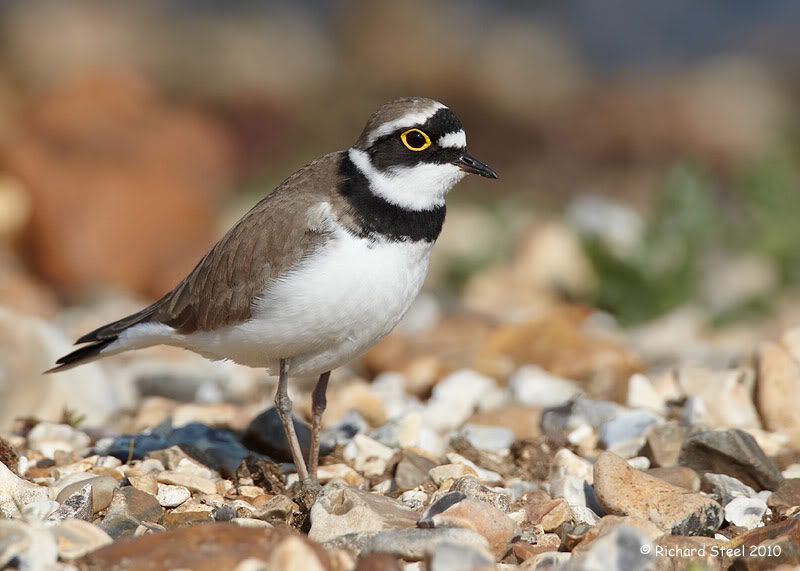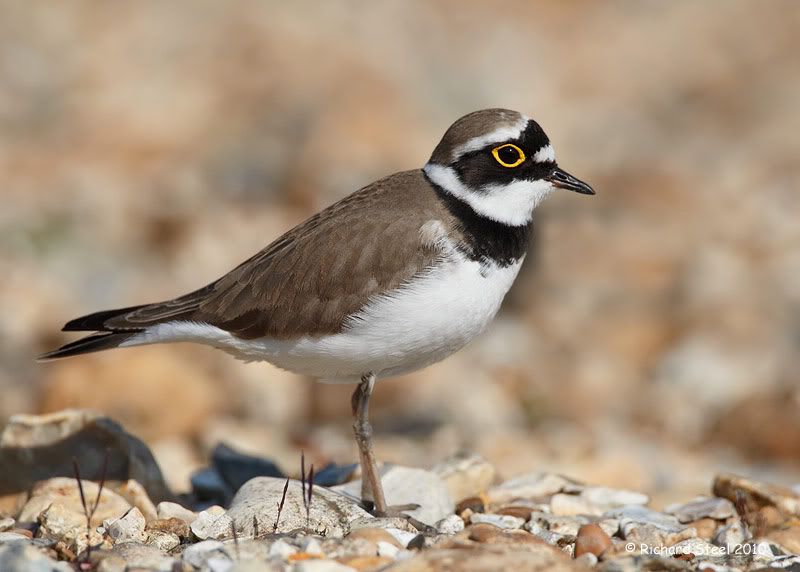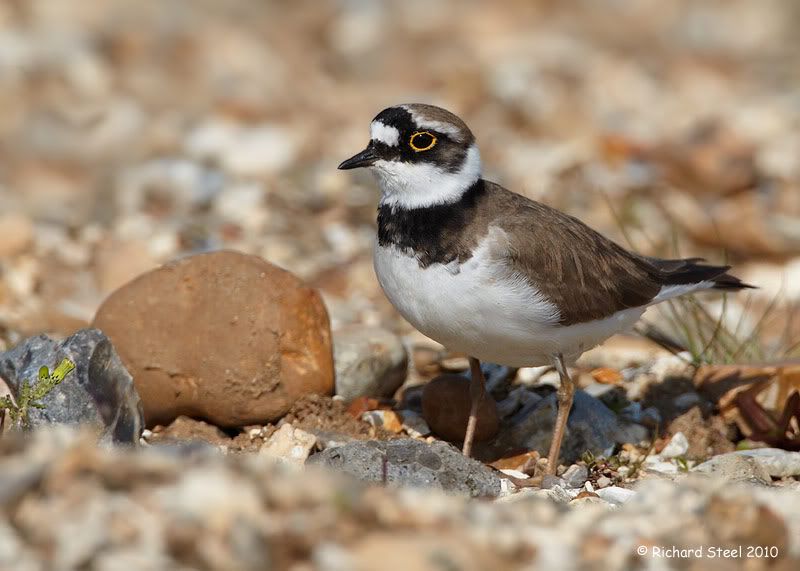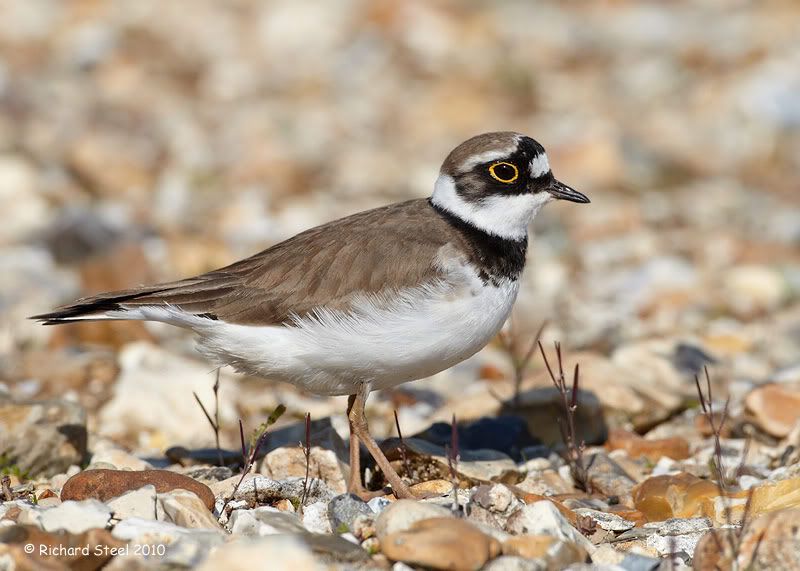Western Oak Woods
If you gave me a a choice to go in photograph birds in any woodland in the UK, the is one type that stands way above the rest. The Western Oak Wood in Spring. These wonderful ancient places with their twisted sessile oaks shrouded in moss and lichens explode in to life for a short period with the arrival and breeding of the three typical summer migrant bird visitors. As you sit in one of these woods, apart from being chewed by the local insects, you can almost feel the place vibrate with the frantic bird activity. The three birds are in my opinion some of the most beautiful small birds to regularly visit the UK and to have them all present in on place is particularly special.
The first of the trio, the Wood Warbler, is probably the most diffcult to photograph as it tends to favour the high tree canopy where it continually bursts in to atmospheric accelerating trill which is then followed by descending mournful notes. Aptly named as one of the group of 'leaf warblers'.
Occasionally you will come across a more obliging bird that comes lower down.
On these occasions the birds always seem to be slightly inquisitive.
It is the males of the next species, the Pied Flycatcher, which often catch the eye as a tiny monochrome bird drops from the tree to the ground to grab a caterpillar.
From my experience the male birds are generally easier to photograph and tend to sit in a spot longer than the females. A shaft on sunlight breaking through the leaves overhead just spotlit where this male was perched.
Another male on a typically moss covered fallen branch
The female is less striking with her brown colours but still a visually appealing bird with those large eyes.
The final bird of the trio, the Common Redstart, is a bird for which I have a great deal of affection. I have spent a great many hour photographing them, the results of which has built in to a very large library of images. However, I can never grow tired of photographing this species. They are surprising similar to a robin but with a constantly flicking red tail which is often the most obvious feature when one flies past.
A female taking a short break from nest sitting duty as revealed by her ruffled belly feathers.
The male with his superb combination of colour. A brilliant white forehead, set in black leading in to a slate grey back and red tail. When you first see a male up close for the first time through the lens it makes you stop in you tracks.
The males are also quite inquisitive if they suspect you are there but cannot see you.
I cannot think of better way of spending the days of May than in such fine company and wonderful surroundings and I am sure next May will see me turning the camera towards these species once more.
Thursday, May 27, 2010
Thursday, May 20, 2010
Bleary Eyes
No matter at what time I set my alarm clock the internal one always seems to go off about 15 minutes before hand. So it was bleary eyes that I pulled myself out of bed at 4:45am to head off in search of yellow wagtails. The reason for the very early start is that I wanted to be on site for first light as the photo situation means the light quickly swings round and makes for some difficult lighting.
An hour later and I was in position but had already had an encounter en route with a Whinchat despite the light at that stage being a bit limited. They really are such attractive little birds but this one proved typically tricky to get close to.
Th yellow wagtails at this site are a game of patience. They inhabit a large agricultural field and the only chance of photographs is when they land on the field fence line or an adjacent track. I could hear the birds calling and see the occasion one flitting up in to the air out of the crop to catch a passing fly. So the wait began. Eventually a male bird flew across and landed on a fence post. The first encounter with a male yellow wagtail each year is always a moment of pause just to admire their vivid yellow.
The bird disappeared back to its field and I was forced to wait once more. However, it was an enjoyable wait in the still early morning as the sun rose and with a mixed dawn chorus of song for company. Another male appeared or maybe the same one.
There are many different races of yellow wagtail which are mainly distinguished by the different coloured heads with the UK version being unique with its yellow and green. After some more waiting another bird appeared and this time landed on the barbed wire between the posts.
This bird stayed for a while and hopped up on to a post and started their distinctive high pitch call.
His efforts had the desired effect and a female quickly appeared nearby before they flew off together across the field at which point I decided it was time to make a move.
Before heading home I had a quick look around to see what else I could find but this only produced a Meadow Pipit.
and a hovering male kestrel on the look out for a rodent breakfast.
This was a good reminder that it probably time for me to head home for some cornflakes and cup of tea after a very enjoyable session. After breakfast It was then back to bed for an hour to rest those bleary eyes and ensure some functionality later in the day after the early start.
No matter at what time I set my alarm clock the internal one always seems to go off about 15 minutes before hand. So it was bleary eyes that I pulled myself out of bed at 4:45am to head off in search of yellow wagtails. The reason for the very early start is that I wanted to be on site for first light as the photo situation means the light quickly swings round and makes for some difficult lighting.
An hour later and I was in position but had already had an encounter en route with a Whinchat despite the light at that stage being a bit limited. They really are such attractive little birds but this one proved typically tricky to get close to.
Th yellow wagtails at this site are a game of patience. They inhabit a large agricultural field and the only chance of photographs is when they land on the field fence line or an adjacent track. I could hear the birds calling and see the occasion one flitting up in to the air out of the crop to catch a passing fly. So the wait began. Eventually a male bird flew across and landed on a fence post. The first encounter with a male yellow wagtail each year is always a moment of pause just to admire their vivid yellow.
The bird disappeared back to its field and I was forced to wait once more. However, it was an enjoyable wait in the still early morning as the sun rose and with a mixed dawn chorus of song for company. Another male appeared or maybe the same one.
There are many different races of yellow wagtail which are mainly distinguished by the different coloured heads with the UK version being unique with its yellow and green. After some more waiting another bird appeared and this time landed on the barbed wire between the posts.
This bird stayed for a while and hopped up on to a post and started their distinctive high pitch call.
His efforts had the desired effect and a female quickly appeared nearby before they flew off together across the field at which point I decided it was time to make a move.
Before heading home I had a quick look around to see what else I could find but this only produced a Meadow Pipit.
and a hovering male kestrel on the look out for a rodent breakfast.
This was a good reminder that it probably time for me to head home for some cornflakes and cup of tea after a very enjoyable session. After breakfast It was then back to bed for an hour to rest those bleary eyes and ensure some functionality later in the day after the early start.
Friday, May 14, 2010
Happy Hare Days
I thought I would a post with some recent hare photos as a change from the birds. This is especially the case as there will hopefully be a good number of bird photographs appearing here soon. About this time in 3 weeks I will be in Finland and heading up to the Varanger Pennisula in Arctic Norway for an 8 day trip with camera. The trip has been booked for nearly a year now and has finally nearly arrived.
I must admit I have ignored the hares in recent weeks as spring bird fever has taken a grip of me but I am sure our paths will be crossing again very soon. To start the post something a little different with a speeding hare leaving a trail of flying early morning dew in its wake.
A rather soggy wild eyed hare sniffing the ground on the trail of a female.
Emerging from the undergrowth
On occasions I get too close to hares which is always a joy. At these times the 500mm lens becomes to long, I just managed to fit this one in the frame.
A quiet moment.
When hares 'wake-up' after resting they will often go through a bit of a stretching regime to get those powerful muscles back in to gear. This tends to take two forms. There is the horizontal stretch.
or the slightly more comical vertical stretch with a yawn.
Hopefully while I am in the Norway I may encounter an Arctic Hare which would be interesting for comparison although unfortunately unlikely to be in its full white coat at this time of year.
I thought I would a post with some recent hare photos as a change from the birds. This is especially the case as there will hopefully be a good number of bird photographs appearing here soon. About this time in 3 weeks I will be in Finland and heading up to the Varanger Pennisula in Arctic Norway for an 8 day trip with camera. The trip has been booked for nearly a year now and has finally nearly arrived.
I must admit I have ignored the hares in recent weeks as spring bird fever has taken a grip of me but I am sure our paths will be crossing again very soon. To start the post something a little different with a speeding hare leaving a trail of flying early morning dew in its wake.
A rather soggy wild eyed hare sniffing the ground on the trail of a female.
Emerging from the undergrowth
On occasions I get too close to hares which is always a joy. At these times the 500mm lens becomes to long, I just managed to fit this one in the frame.
A quiet moment.
When hares 'wake-up' after resting they will often go through a bit of a stretching regime to get those powerful muscles back in to gear. This tends to take two forms. There is the horizontal stretch.
or the slightly more comical vertical stretch with a yawn.
Hopefully while I am in the Norway I may encounter an Arctic Hare which would be interesting for comparison although unfortunately unlikely to be in its full white coat at this time of year.
Tuesday, May 11, 2010
Dawn Warblings
For those of you brave enough to face the 5 a.m alarm clock call and head out in to some countryside, you will be greeted with a beautiful dawn chorus at the moment. If your wanderings take you near areas of scrub and reed bed then the warblers add to the musical mix as they sing to claim their territory and attract a mate.
From a photography point of view, warblers are tricky birds with their tendency to lurk in dense vegetation. The brief period of singing before nesting offers some of the best chances to get some photos. However, I love to photograph these birds and in can be very rewarding when it all comes together. Here are some of my recent efforts.
The first bird of this Blog post is the Blackcap, of which there seems to be good numbers around this year. They are usually relatively easy to locate with their characteristic clear, loud and fluid song that sounds a bit like a blackbird but with some extra 'warbles'. However, they are notorious for singing deep with in a shrub and so catching them in a clear area to photograph is a game of patience.
Another good target for the early spring mornings is the Willow Warbler. Visually this is a bird that is easily confused with the Chiffchaff but the lighter coloured legs are a good identification starting point. However, they are easily separated by their songs. The willow warbler song tends to be a series of fluid descending notes that always sound slight sad to me. They tend to stay out in the open more than Blackcap but their very small size and hyperactive nature creates it own photography challenges.
To finish this trio of warbler species, the Common Whitethroat. This species is characterised by a slightly scratchy hesitant song that usually emanates from a bramble or gorse bush.
This is another vegetation skulking bird but it seems to have an endless curiosity and will often come to investigate a person watching with the patience to wait, although its appearance may be brief.
For those of you brave enough to face the 5 a.m alarm clock call and head out in to some countryside, you will be greeted with a beautiful dawn chorus at the moment. If your wanderings take you near areas of scrub and reed bed then the warblers add to the musical mix as they sing to claim their territory and attract a mate.
From a photography point of view, warblers are tricky birds with their tendency to lurk in dense vegetation. The brief period of singing before nesting offers some of the best chances to get some photos. However, I love to photograph these birds and in can be very rewarding when it all comes together. Here are some of my recent efforts.
The first bird of this Blog post is the Blackcap, of which there seems to be good numbers around this year. They are usually relatively easy to locate with their characteristic clear, loud and fluid song that sounds a bit like a blackbird but with some extra 'warbles'. However, they are notorious for singing deep with in a shrub and so catching them in a clear area to photograph is a game of patience.
Another good target for the early spring mornings is the Willow Warbler. Visually this is a bird that is easily confused with the Chiffchaff but the lighter coloured legs are a good identification starting point. However, they are easily separated by their songs. The willow warbler song tends to be a series of fluid descending notes that always sound slight sad to me. They tend to stay out in the open more than Blackcap but their very small size and hyperactive nature creates it own photography challenges.
To finish this trio of warbler species, the Common Whitethroat. This species is characterised by a slightly scratchy hesitant song that usually emanates from a bramble or gorse bush.
This is another vegetation skulking bird but it seems to have an endless curiosity and will often come to investigate a person watching with the patience to wait, although its appearance may be brief.
Saturday, May 01, 2010
Down South - Part 2
With the first part of my plan successfully completed it was time to see if I could photograph the other intended new species in the shape of Sand Martins and Little Ringed Plover. From my web research I had found a nature reserve that could potentially offer both from different hides. Before I go somewhere new I always check where the sun is going to be with a very cool piece of free software called the 'Photographer Ephemeris' which overlays the sun's angle during a particular day on to a Google map. This informed me that it would be best to try the Sand Martins first due to the position of the hide.
I found myself outside the hide at 8:45am, which was due to open at 9am, waiting for someone to arrive to unlock the door. Stupidly I did not check the door which was already open but it gave me some time to watch numerous sand martins speeding round overhead. Once in the hide I decided it was not going to be possible to photograph the birds in flight through the restrictive opening due to their fast and erratic flight paths and so concentrated my efforts on a small branch in the water. The birds were frequently landing there to preen the sand out of their feathers, which accumulated as they made their way along the nest burrows.
A bird comes in to settle on the perch as another speeds past behind
My favourite photograph of my brief time with them was this bird coming in to land with its feet and leading wing edges covered in sand.
I could have quite happily sat there for several hours photographing these acrobatic birds but time was pressing and I had promised I would be at the cottage for 10:30am. I walked around to the next hide and had about 15 minutes left before I had to depart in which to try and photograph the scarce Little Ringed Plover. As I opened the hide flap I was greeted with a low gravel bank leading down to a huge lake with not a bird in sight to be seen. I spotted right across the lake a small white speck flying in the opposite direction which then circled round and flew straight back towards the hide. It kept coming and eventually a male Little Ringed Plover landed on the gravel right in front of me. I guess when your luck is working well such things happen.
A couple of minutes later and the female arrived with its less prominent black markings.
As I walked the short path back to cottage at 10:30am I wore a broad smile and reflected on what had been a memorable morning session where for once a plan had all come together perfectly.
With the first part of my plan successfully completed it was time to see if I could photograph the other intended new species in the shape of Sand Martins and Little Ringed Plover. From my web research I had found a nature reserve that could potentially offer both from different hides. Before I go somewhere new I always check where the sun is going to be with a very cool piece of free software called the 'Photographer Ephemeris' which overlays the sun's angle during a particular day on to a Google map. This informed me that it would be best to try the Sand Martins first due to the position of the hide.
I found myself outside the hide at 8:45am, which was due to open at 9am, waiting for someone to arrive to unlock the door. Stupidly I did not check the door which was already open but it gave me some time to watch numerous sand martins speeding round overhead. Once in the hide I decided it was not going to be possible to photograph the birds in flight through the restrictive opening due to their fast and erratic flight paths and so concentrated my efforts on a small branch in the water. The birds were frequently landing there to preen the sand out of their feathers, which accumulated as they made their way along the nest burrows.
A bird comes in to settle on the perch as another speeds past behind
My favourite photograph of my brief time with them was this bird coming in to land with its feet and leading wing edges covered in sand.
I could have quite happily sat there for several hours photographing these acrobatic birds but time was pressing and I had promised I would be at the cottage for 10:30am. I walked around to the next hide and had about 15 minutes left before I had to depart in which to try and photograph the scarce Little Ringed Plover. As I opened the hide flap I was greeted with a low gravel bank leading down to a huge lake with not a bird in sight to be seen. I spotted right across the lake a small white speck flying in the opposite direction which then circled round and flew straight back towards the hide. It kept coming and eventually a male Little Ringed Plover landed on the gravel right in front of me. I guess when your luck is working well such things happen.
A couple of minutes later and the female arrived with its less prominent black markings.
As I walked the short path back to cottage at 10:30am I wore a broad smile and reflected on what had been a memorable morning session where for once a plan had all come together perfectly.
Subscribe to:
Posts (Atom)

